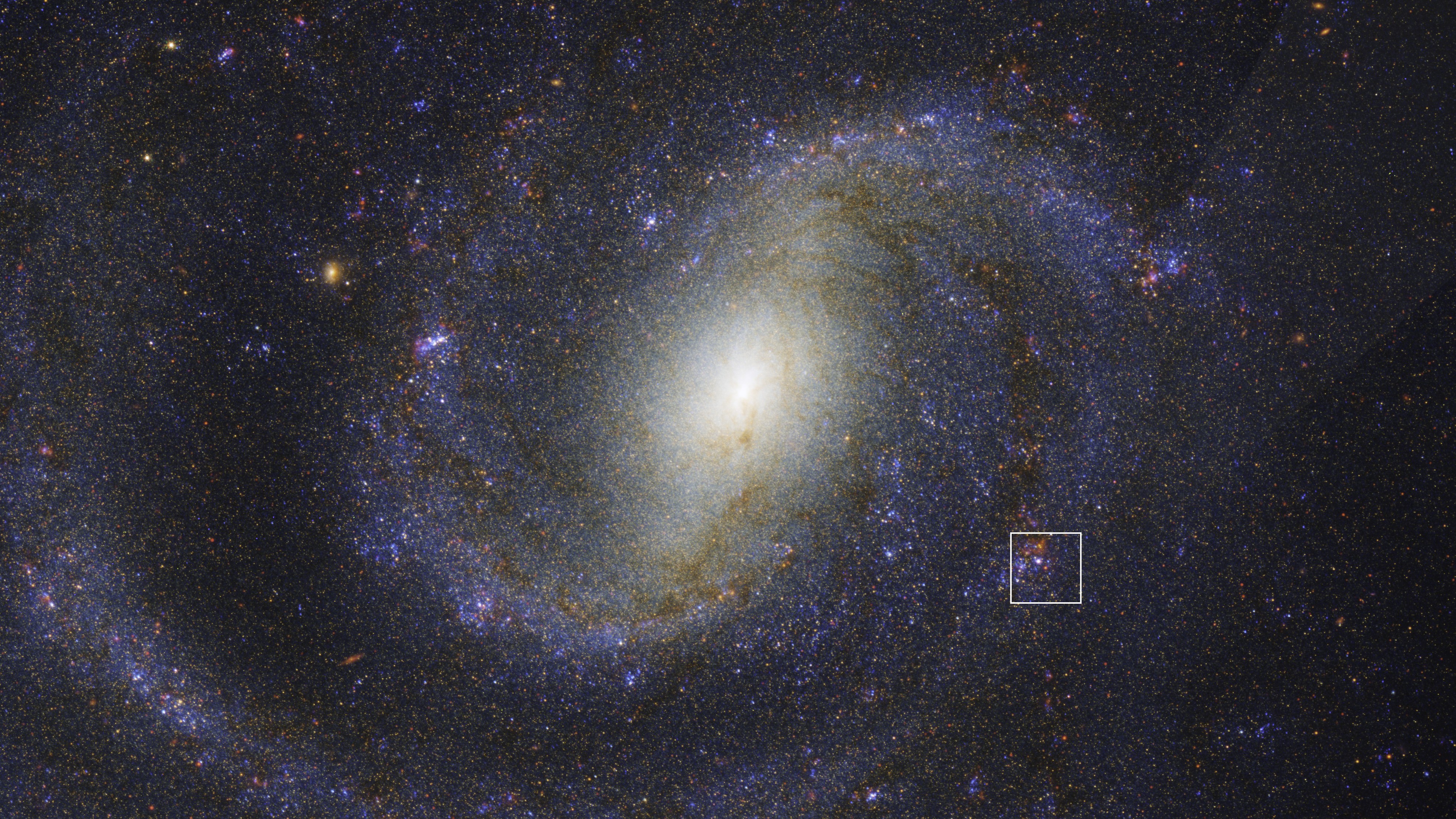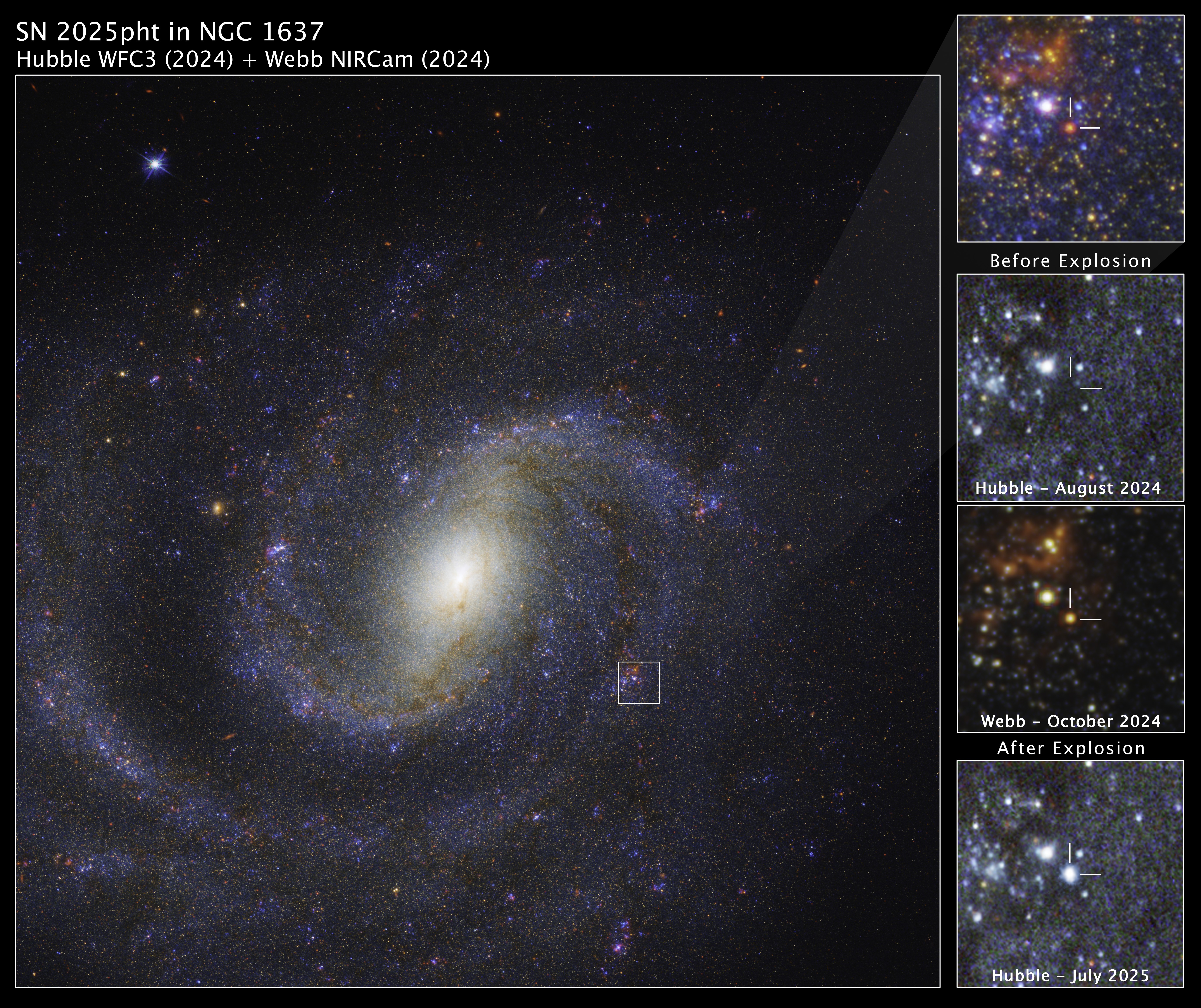Hidden 'doomed' star revealed by James Webb Space Telescope could solve decades-old mystery
Researchers have identified a massive red supergiant on the brink of supernova in images from the James Webb Space Telescope, shedding light on a decades-old star mystery.

The James Webb Space Telescope (JWST) has revealed a hidden "doomed" star that could help solve a giant astrophysical mystery.
The star is a massive red supergiant, which JWST snapped just before the star exploded in a fiery supernova. Massive red supergiants should, in theory, cause most supernovas, but they're rarely observed. The latest JWST observation, described in a new study published Wednesday (Oct. 8) in The Astrophysical Journal Letters, adds weight to the idea that these giants are often obscured by clouds of dust.
"For multiple decades, we have been trying to determine exactly what the explosions of red supergiant stars look like," study lead author Charlie Kilpatrick, a research assistant professor studying massive stars at Northwestern University in Illinois, said in a statement. "Only now, with JWST, do we finally have the quality of data and infrared observations that allow us to say precisely the exact type of red supergiant that exploded and what its immediate environment looked like."
Stars around the size of our sun swell up near the end of their lifecycles to become red giants before going supernova. Red supergiants are massive stars on the verge of detonating, typically measuring hundreds or thousands of times larger than our sun.
The All-Sky Automated Survey for Supernovae first detected the supernova from the newly imaged supergiant in June. The supernova, officially named SN 2025pht, came from a galaxy called NGC 1637, which is located 38 million light-years from Earth — pretty close for something in space. The authors of the new study identified the supergiant's source star (its progenitor) by comparing historical Hubble Space Telescope data to new JWST images of NGC 1637 taken before and after the explosion.

Researchers like Kilpatrick have suggested that the most massive aging stars might also be the dustiest, so their light is blocked. This possible explanation tracks with the new JWST observation. The star shone about 100,000 times brighter than our sun, but the team estimated that its dust was so thick that this light was made more than 100 times dimmer, according to the statement.
The dust was also particularly effective at blocking shorter, blue wavelengths of light. Fortunately, JWST's powerful infrared detection could see the longer red wavelengths, providing an unprecedented detailed look at a supergiant on the brink of going supernova.
Get the world’s most fascinating discoveries delivered straight to your inbox.
"SN2025pht is surprising because it appeared much redder than almost any other red supergiant we've seen explode as a supernova," Kilpatrick said. "That tells us that previous explosions might have been much more luminous than we thought because we didn't have the same quality of infrared data that JWST can now provide."

Patrick Pester is the trending news writer at Live Science. His work has appeared on other science websites, such as BBC Science Focus and Scientific American. Patrick retrained as a journalist after spending his early career working in zoos and wildlife conservation. He was awarded the Master's Excellence Scholarship to study at Cardiff University where he completed a master's degree in international journalism. He also has a second master's degree in biodiversity, evolution and conservation in action from Middlesex University London. When he isn't writing news, Patrick investigates the sale of human remains.
You must confirm your public display name before commenting
Please logout and then login again, you will then be prompted to enter your display name.
